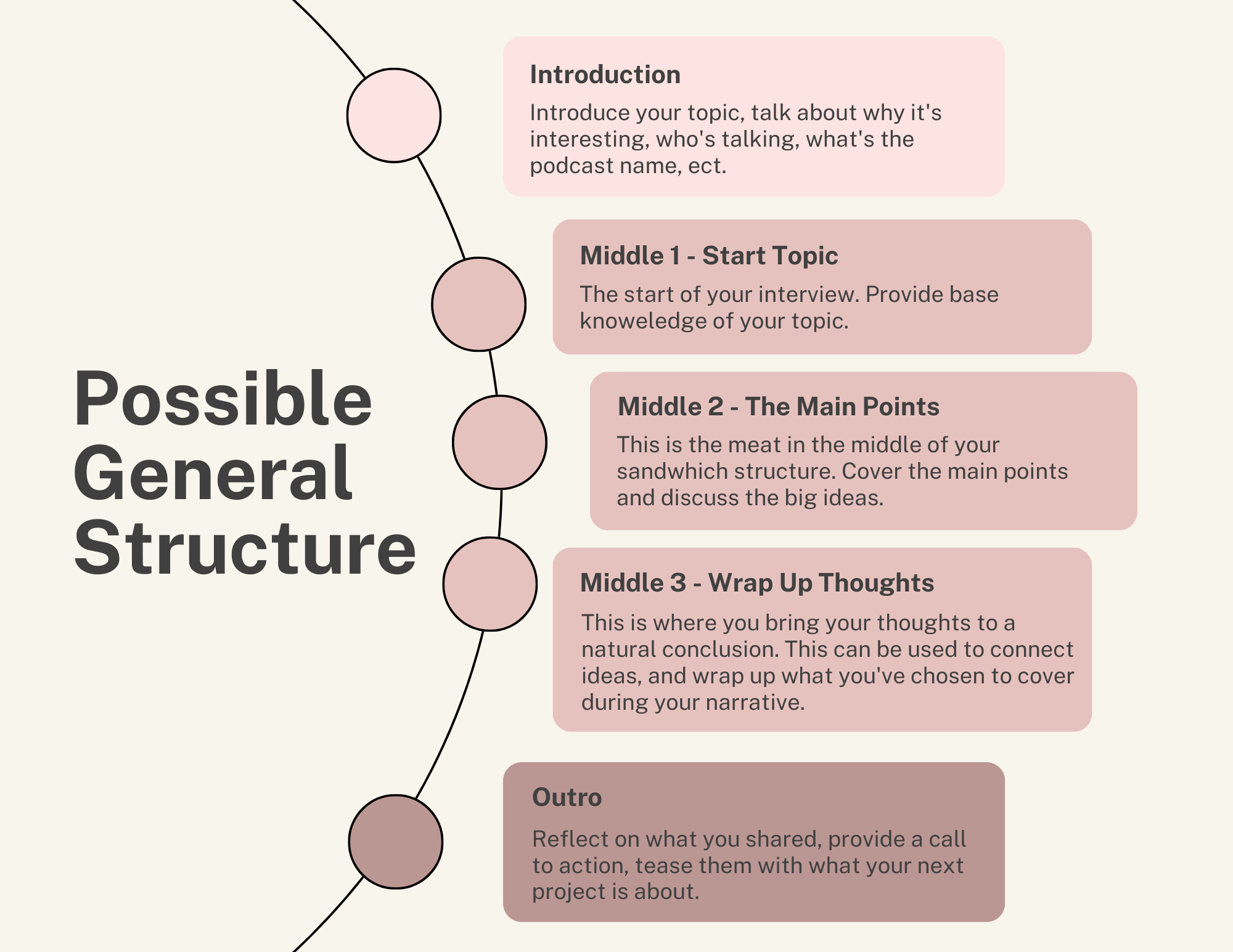Recording Audio
Being good at interviews, and audio editing are both skills that can support other media making but are important on their own. This page outlines the steps of how to structure an interview, how to edit audio and other resources available.
Creating Interview Content
Do your research, and craft good questions but still, make sure you have a conversation.
When you interview someone having good questions is only half the battle. Sometimes people get nervous when they know they are being recorded, or they don’t know what to say other than a very specific answer to your question. This is where having a conversation and being able to think on your feet comes in.
Some of the best interview responses you get when recording are the little snippets you didn’t expect. Watch/listen to some of the examples below and notice how the interviewers are interacting with their interviewees. Listen to how the interviewers craft the conversation around their questions.
They are flexible or quick with knowledgeable but related follow-up questions, make their guests feel comfortable and open, and are able to hold a conversational element to the interview. Think about how that lends to making the interview better, and how different it would be if they just stuck to their scripted questions. In some examples, they verbally put their audience in the room of the interview by adding details and information about their surrounding. All things add different storytelling elements to their narratives.
Examples
Audio Interviews / Podcasts
1. Author Richard Wagamese on his novel Indian Horse
In her interview with author Richard Wagamese, Shelagh Rogers asks questions and describes settings to engage the listener and set them in the room of the interview. She asks thoughtful questions and allows the interview to naturally flow.
2. Questlove On Prince, Doo-Wop, and The Food Equivalent Of The ‘Mona Lisa’
Ahmir “Questlove” Thompson, the drummer and leader of The Tonight Show’s house band The Roots is interviewed by Terry Gross about his at the time new book, life, music and more.
Previous Semester’s Examples
Other Interview Examples
(We are not asking you to do a video for this, these are good interview questions/conversation examples!)
